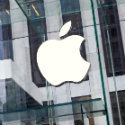'We had thought that the launch of a 5G iPhone could be a catalyst,' wrote the analysts at Evercore. 'As it turned out, churn and upgrade activity has remained modest.'

Apple released its first 5G-capable iPhone in the fourth quarter of 2020. The event represented a major milestone for the 5G industry in the US; after all, Apple's share of the US smartphone market totals 45.9%, just below the 54% commanded by Android, according to market research firm eMarketer.
However, some financial analysts don't expect the new gadget to spark the kind of 5G super cycle – a bigger-than-normal rise in the sale of phones – that some had hoped for.
"Even with the launch of the 5G iPhone in October, we're not seeing evidence of a major increase in upgrade activity," wrote the analysts at Evercore in early January. "While upgrades have clearly picked up over fall 2019 levels, we don't believe that consumers are yet seeing a clear benefit to 5G sufficient to drive a dramatic acceleration in upgrades to 5G handsets in order to take advantage of 5G."
The analysts' position appears backed by some recent commentary from T-Mobile and Verizon.
"I won’t comment on, is this a super cycle or not. We are seeing some areas of the consumer base upgrading to higher rates and other areas not. So I’d say it’s a bit of a mixed bag," said T-Mobile's Matt Staneff in November, according to a Seeking Alpha transcript of his remarks at an investor event.
Similarly, Verizon's Ronan Dunne declined to say whether he's seeing a super cycle. But in comments at another investor event in January transcribed by Verizon, he did argue that 5G device adoption "is probably somewhere 12 to 18 months faster than was the case in 4G LTE."
The two executives also said that they're seeing fewer customers willing to switch carriers. That's important because customers often buy a new phone when they switch.
"In the fourth quarter ... we did see a smaller switcher pool," explained Verizon's Dunne. "Some of that was the legacy of the pandemic, no question about it, which had seen reductions year-over-year in all of the quarters from the last few weeks of Q1."
However, in early December, T-Mobile's Mike Sievert hinted that things were starting to improve. "We thought this quarter would be back-end loaded and it is," he said, according to a Seeking Alpha transcript, explaining that the operator saw more switchers the week after the Thanksgiving holiday – typically a hot shopping day – than the day itself. "So some of the dynamics are a little different than other years."
T-Mobile reported 1.7 million total net additions during the fourth quarter, in preliminary results.
Nonetheless, analysts remained generally downbeat on the industry as a whole.
"We had thought that the launch of a 5G iPhone could be a catalyst to reverse recent low churn and upgrade activity," wrote the analysts at Evercore in a note to investors Sunday. "As it turned out, churn and upgrade activity has remained modest."
Investors will get their first taste of operators' full fourth quarter results – including initial sales of a 5G-capable iPhone – starting Tuesday, when Verizon reports. Next up is AT&T on Wednesday, and T-Mobile will likely report its own results in the next week or two.
There are some indications that the 5G iPhone may help move the needle in the future, though. Citing their recent quarterly survey of around 1,000 mobile customers in the US, the financial analysts at Cowen wrote in early January that a shrinking number of respondents reported holding onto an aging phone. Specifically, the analysts said that 29.1% of postpaid respondents said they have owned their current phone for more than two years, down from 32.1% in their prior survey. The figures could reflect a growing number of customers interested in upgrading to a new device.
"While the switcher pool continues to be lower amid the pandemic (and aggressive retention promos), our survey suggests the new 5G device launches could be instigating a rejuvenated upgrade cycle, ending a streak of subdued upgrade rates and the 'holding phones for longer' narrative as 5G is giving reason for device changeout after years of relatively undifferentiated device features," the analysts wrote.
Related posts:
— Mike Dano, Editorial Director, 5G & Mobile Strategies, Light Reading | @mikeddano
About the Author(s)
You May Also Like











